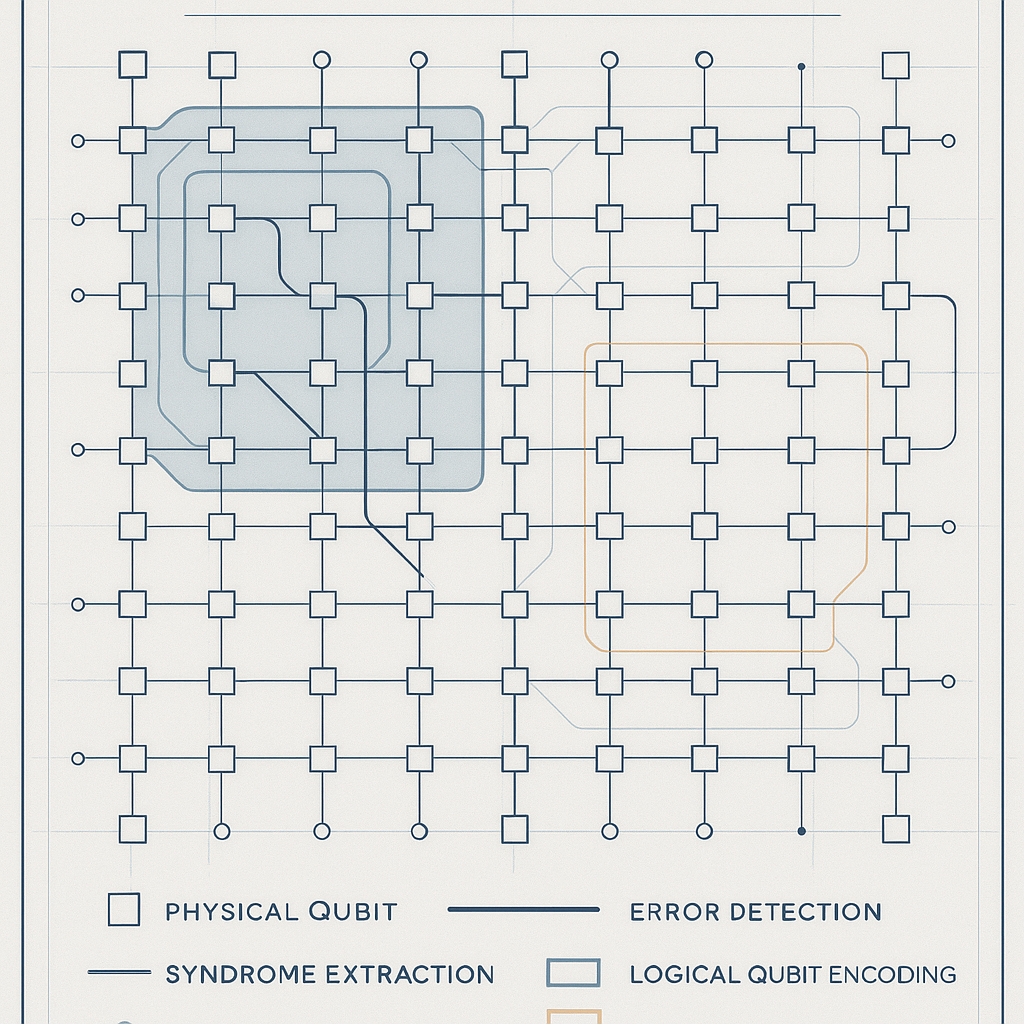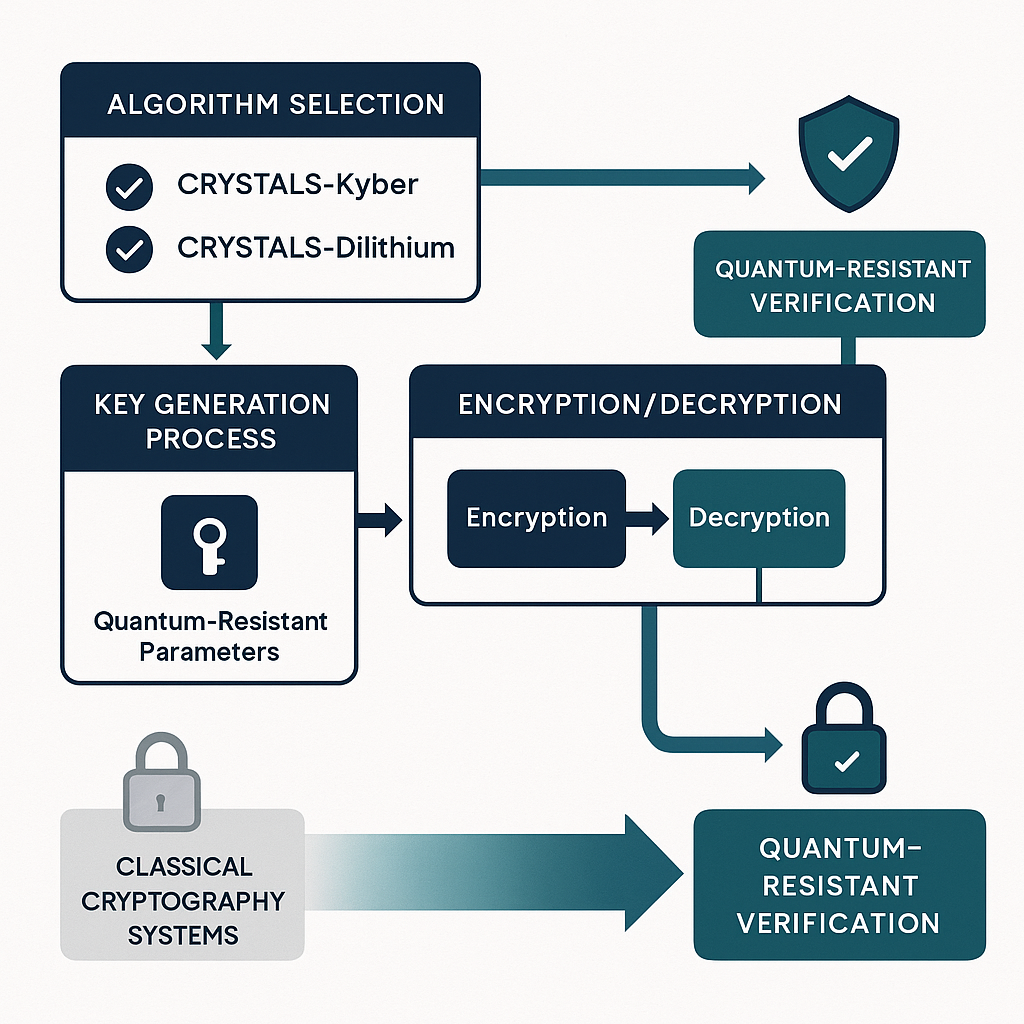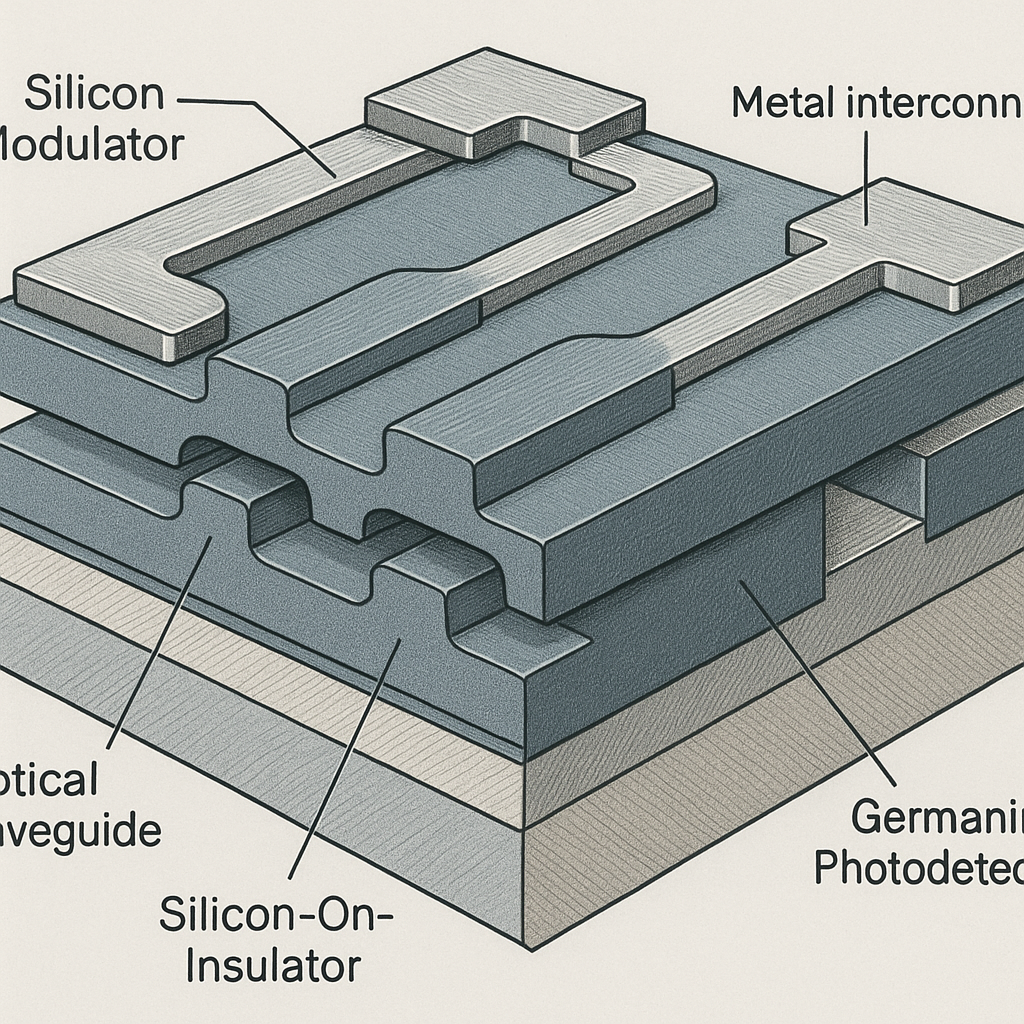
Quantum-photonic hybrid computing architecture diagram showing integrated quantum and photonic processing components
Executive Summary
Quantum and photonic computing technologies are experiencing unprecedented advancement in 2024-2025, with critical breakthroughs in error correction, specialized hardware architectures, and hybrid system integration. This technical analysis examines six primary development vectors that are reshaping computational paradigms: quantum error correction achieving logical qubit demonstrations, specialized quantum hardware moving beyond universal computing models, post-quantum cryptography deployment, hybrid photonic-electronic neural networks, silicon photonics integration reaching commercial scale, and photonic quantum computing platforms achieving practical implementation milestones.
Table of Contents
- Executive Summary
- Quantum Computing Technology Vectors
- Quantum Error Correction and Logical Qubits
- Specialized Quantum Hardware and Hybrid Systems
- Post-Quantum Cryptography Implementation
- Photonic Computing Technology Vectors
- Hybrid Photonic-Electronic Neural Networks
- Silicon Photonics and Photonic Integrated Circuits
- Photonic Quantum Computing and Communication
- Technical Implementation Parameters
- Optimal Image Specifications for Technical Documentation
- Performance Metrics and Validation
- Technical Conclusions
Quantum Computing Technology Vectors
Quantum Error Correction and Logical Qubits
Quantum error correction has transitioned from theoretical frameworks to practical implementation, with major quantum computing platforms demonstrating logical qubit operations below error correction thresholds. Current implementations utilize surface codes and stabilizer codes to encode quantum information across multiple physical qubits, enabling error detection and correction while preserving quantum coherence.

Specialized Quantum Hardware and Hybrid Systems
The quantum computing industry is pivoting from universal quantum computer development toward application-specific quantum processors (ASQPs). These specialized systems integrate quantum processing units with classical CPUs and GPUs, creating hybrid architectures optimized for specific computational domains including optimization, molecular simulation, and machine learning acceleration.[1]
| System Type | Quantum Component | Classical Integration | Target Applications |
|---|---|---|---|
| Optimization ASQP | Annealing QPU | High-performance CPU cluster | Logistics, Finance, Scheduling |
| Simulation ASQP | Gate-model QPU | GPU acceleration | Drug discovery, Materials science |
| ML Acceleration | Variational QPU | Neural network processors | Pattern recognition, Optimization |
Post-Quantum Cryptography Implementation
Post-quantum cryptography deployment is accelerating in anticipation of cryptographically relevant quantum computers. Organizations are implementing quantum-resistant algorithms including lattice-based cryptography, code-based cryptography, and multivariate cryptography to protect against future quantum threats. The National Institute of Standards and Technology (NIST) standardization process has established primary algorithms for key encapsulation and digital signatures.

Photonic Computing Technology Vectors
Hybrid Photonic-Electronic Neural Networks
Photonic neural networks leverage light-based computation to achieve unprecedented processing speeds and energy efficiency for artificial intelligence workloads. These systems utilize optical interference, wavelength division multiplexing, and electro-optic modulation to perform matrix multiplications and nonlinear activation functions at the speed of light.

Silicon Photonics and Photonic Integrated Circuits
Silicon photonics technology enables integration of photonic circuits on silicon substrates using standard semiconductor fabrication processes. This approach provides compatibility with existing CMOS manufacturing infrastructure while achieving high-density optical integration for data center interconnects, AI acceleration, and high-performance computing applications.
- Silicon-on-insulator (SOI) wafer platforms for optical waveguide fabrication
- Germanium photodetectors integrated on silicon substrates
- Silicon modulators utilizing carrier depletion and injection effects
- Wavelength division multiplexing (WDM) components for parallel processing
- Hybrid integration with III-V semiconductor laser sources

Photonic Quantum Computing and Communication
Photonic quantum computing platforms utilize single photons as qubits, leveraging quantum interference and measurement-induced interactions to perform quantum computations. These systems demonstrate advantages in room-temperature operation, network connectivity, and scalability through photonic interconnects.

Technical Implementation Parameters
Optimal Image Specifications for Technical Documentation
Technical documentation requires optimized image parameters to balance visual clarity with web performance. Analysis of standard image formats reveals specific dimension and compression requirements for different content types.
| Image Type | Dimensions (px) | Compression (%) | File Size (KB) | Use Case |
|---|---|---|---|---|
| Technical Diagrams | 1024×1024 | 85 | 391.7 | Circuit schematics, system architectures |
| Landscape Figures | 1280×720 | 80 | 324.0 | Process flows, timeline diagrams |
| Portrait Charts | 800×1000 | 80 | 281.2 | Vertical data displays, comparisons |
| Banner Graphics | 1920×823 | 75 | 520.8 | Header images, wide system overviews |
| Inline Thumbnails | 600×400 | 90 | 94.9 | Small illustrations, icons |
Performance Metrics and Validation
Quantum and photonic computing systems require rigorous performance validation through standardized metrics. Quantum systems are evaluated using quantum volume, quantum approximate optimization algorithm (QAOA) performance, and error correction thresholds. Photonic systems utilize metrics including optical insertion loss, extinction ratio, and bandwidth-distance products.
Quantum Volume = min(2^n, d^2) where n = number of qubits, d = circuit depth
Photonic Link Budget = P_tx – L_fiber – L_coupling – L_components ≥ P_rx_min
Technical Conclusions
The convergence of quantum error correction, specialized quantum hardware, photonic neural networks, and silicon photonics integration represents a fundamental shift in computational architectures. Quantum systems are transitioning from experimental demonstrations to practical error-corrected logical qubit operations, while photonic computing is achieving commercial deployment in high-performance data processing applications. The integration of these technologies through hybrid quantum-photonic-classical systems will define the next generation of computational platforms, requiring continued development of specialized algorithms, error correction protocols, and system integration methodologies.
Stay Updated
Join our newsletter for the latest updates and exclusive content.